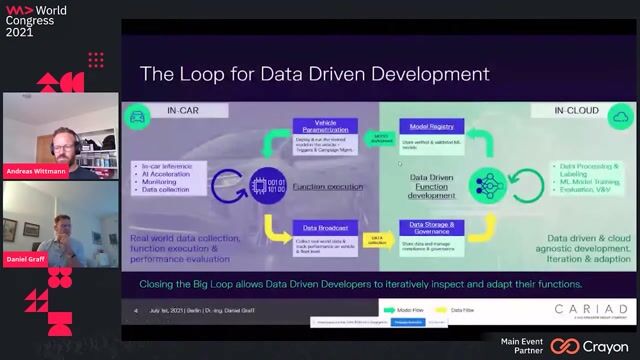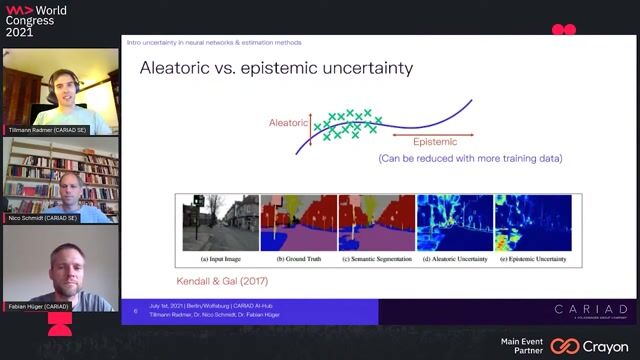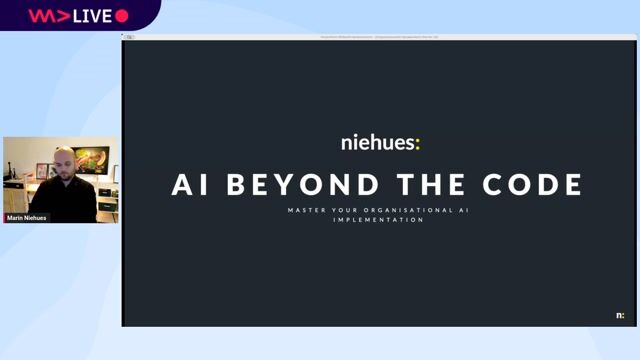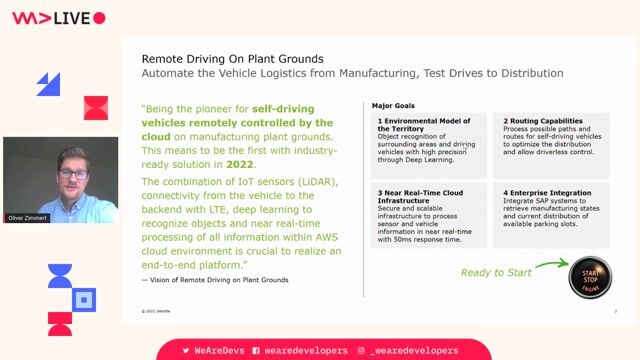Nico Schmidt
Intelligent Data Selection for Continual Learning of AI Functions
#1about 3 minutes
Understanding the core use cases for data selection
Data selection is crucial for creating diverse datasets, enabling active learning, detecting corner cases, and building new AI functions.
#2about 4 minutes
Comparing data sources for machine learning models
Data can be sourced from data lakes with heavy compute, targeted test fleets, or the vast customer fleet which offers real-world scenarios but has limited compute.
#3about 2 minutes
Identifying informative data in long-tail distributions
Informative data lies in the long tail of the data distribution, including rare scenarios, weak sensor signals, and atypical class distributions.
#4about 3 minutes
Overview of methods for intelligent data selection
Key methods for selecting valuable data include uncertainty estimation, temporal analysis of predictions, anomaly detection, and using model ensembles.
#5about 3 minutes
Using softmax uncertainty for traffic light detection
An uncertainty trigger aggregates softmax scores from a traffic light detection model to identify and record challenging images like false positives or distant objects.
#6about 4 minutes
Evaluating model improvements from selected data
Proper model evaluation requires testing against not just random data but also corner-case datasets to prevent performance regressions in specific scenarios.
#7about 5 minutes
Deploying data selection triggers to the vehicle fleet
An in-vehicle module called "Instinct" filters data streams in real-time, enabling continual learning by collecting data from new regions to expand a model's operational domain.
#8about 5 minutes
Building a universal data selection framework
A universal framework uses a plugin architecture to support various trigger types and treats perception functions as black boxes by using a framework-independent format like ONNX.
#9about 21 minutes
Overcoming challenges in automotive software deployment
Deploying data science code to vehicles requires bridging Python and C++, ensuring high code quality, and maintaining full traceability from requirements to artifacts.
Related jobs
Jobs that call for the skills explored in this talk.
WALTER GROUP
Wiener Neudorf, Austria
Intermediate
Senior
Python
Data Vizualization
+1
Wilken GmbH
Ulm, Germany
Senior
Kubernetes
AI Frameworks
+3
Matching moments

03:13 MIN
How AI can create more human moments in HR
The Future of HR Lies in AND – Not in OR

03:28 MIN
Shifting from talent acquisition to talent architecture
The Future of HR Lies in AND – Not in OR

04:22 MIN
Navigating ambiguity as a core HR competency
The Future of HR Lies in AND – Not in OR

06:51 MIN
Balancing business, technology, and people for holistic success
The Future of HR Lies in AND – Not in OR

06:04 MIN
The importance of a fighting spirit to avoid complacency
The Future of HR Lies in AND – Not in OR

06:59 MIN
Moving from 'or' to 'and' thinking in HR strategy
The Future of HR Lies in AND – Not in OR

05:10 MIN
How the HR function has evolved over three decades
The Future of HR Lies in AND – Not in OR

06:10 MIN
Understanding global differences in work culture and motivation
The Future of HR Lies in AND – Not in OR
Featured Partners
Related Videos
 19:24
19:24Finding the unknown unknowns: intelligent data collection for autonomous driving development
Liang Yu
 26:55
26:55How Machine Learning is turning the Automotive Industry upside down
Jan Zawadzki
 38:12
38:12Developing an AI.SDK
Daniel Graff & Andreas Wittmann
 48:01
48:01What non-automotive Machine Learning projects can learn from automotive Machine Learning projects
Jan Zawadzki
 1:00:28
1:00:28Uncertainty Estimation of Neural Networks
Tillman Radmer & Fabian Hüger & Nico Schmidt
 30:49
30:49AI beyond the code: Master your organisational AI implementation.
Marin Niehues
 42:18
42:18On the straight and narrow path - How to get cars to drive themselves using reinforcement learning and trajectory optimization
Francis Powlesland & Elena Kotljarova
 48:54
48:54Remote Driving on Plant Grounds with State-of-the-Art Cloud Technologies
Oliver Zimmert
Related Articles
View all articles



From learning to earning
Jobs that call for the skills explored in this talk.

Imec
Azure
Python
PyTorch
TensorFlow
Computer Vision
+1

RIB Deutschland GmbH
Stuttgart, Germany
Python
Machine Learning

UL Solutions
Barcelona, Spain
Python
Machine Learning



autonomous-teaming
Berlin, Germany
Remote
ETL
NoSQL
NumPy
Python
+3

autonomous-teaming
München, Germany
Remote
ETL
NoSQL
NumPy
Python
+3

autonomous-teaming
München, Germany
Remote
C++
GIT
Linux
Python
+1
